LTV MGM-52 Lance
The Lance was a short/medium-range tactical surface-to-surface missile, which replaced the MGM-29 Sergeant and MGR-1 Honest John in U.S. Army service. It was also the last nuclear-armed tactical ballistic missile of the U.S. Army.
In the late 1950s, the Army began to formulate requirements for a new series of ballistic missiles, called Missile "A" through "D". Missile "A" was to become a replacement for the MGR-3 Little John, Missile "B" for the MGR-1 Honest John, Missile "C" for the MGM-29 Sergeant, and Missile "D" (which evolved into the MGM-31 Pershing) for the PGM-11 Redstone. In 1962, Ling-Temco-Vought (LTV) was selected as prime contractor for Missile "B", which at that time was expected to become a short-range (50 km) missile. In November 1962 the name Lance was assigned, and in June 1963 the designation MGM-52 was allocated.
The Lance used a new variable-thrust boost/sustain liquid-fueled rocket engine, using storable liquid propellants. The engine was built by Rocketdyne, and its development turned out to be rather troublesome, causing many delays. Additionally, the Lance used 4 spin motors immediately after launch which produced the charactersitic black smoke which accompanied every Lance firing. The Lance was guided by a completely self-contained inertial system (AN/DJW-48) using the principle of DCAM (Directional Control Automatic Meteorological) Compensation. In this system the missile's accelaration was constantly monitored by an accelerometer, and the variable-thrust sustainer engine provided exactly the amount of thrust to keep the missile on the predetermined trajectory, compensating for any atmospheric changes or disturbances. The first test flight of an XMGM-52A missile occurred in March 1965, and the tests continued through 1965/66, including validation of the DCAM guidance principle.
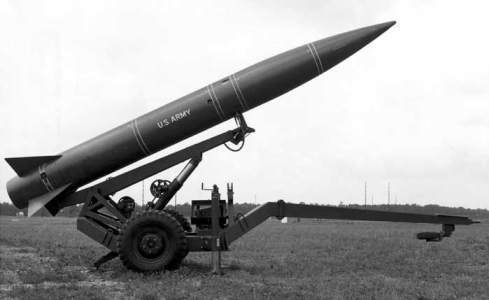 |
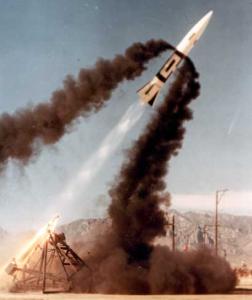 | |
| Photos: U.S. Army | ||
| XMGM-52A | ||
In 1965, studies showed that by using a higher performance engine, larger missile fins, and by removing the ballast from the warhead section, the range of the Lance could be significantly increased to about 140 km. The modified missile was called Extended Range Lance (XRL), and effectively combined the requirements for Missiles "B" and "C". The XRL was designated MGM-52B, and while testing continued with the XMGM-52A, it was decided that only the MGM-52B would be fielded.
The first light of an XMGM-52B XRL missile occurred in May 1969, and in the next year the required range and accuracy of the XRL could be demonstrated. However, serious troubles with the rocket engine plagued the flight tests between 1967 and 1971, and the Lance was not declared ready for deployment until May 1972. By this time the planned chemical and conventional warheads had been cancelled, and the initial Lance missiles were all armed with a W-70 thermonuclear variable-yield (1 kT - 100 kT) warhead. The final production configuration of the Lance with all the changes made during XMGM-52B testing (including a slightly redesigned fin and tail section) was designated MGM-52C.
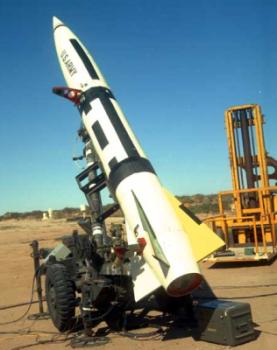 |
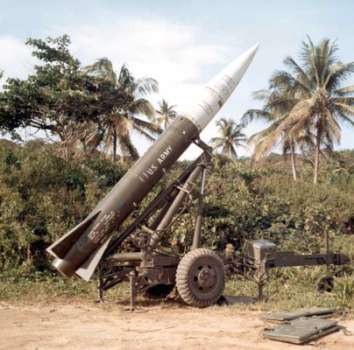 | |
| Photos: U.S. Army | ||
| XMGM-52B | ||
The first operational Lance battalion was deployed in Europe in September 1973. Compared to the Sergeant it replaced, Lance was far easier to operate and maintain. The missile could be fired at short notice (reaction time was less than 15 minutes), and because of its compact size, more missiles could be moved by a single unit.
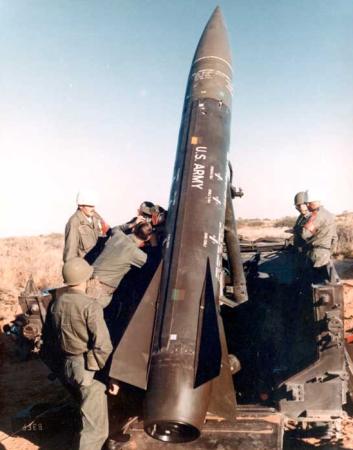 |
| Photo: U.S. Army |
| MGM-52C |
In 1976 the development of a non-nuclear warhead section for the MGM-52C resumed. This was a cluster warhead designated XM251, which used M40 submunition bomblets. The M251 warhead entered service with the U.S. Army in 1978, and conventially armed Lance missiles (with several warhead types) were used by many NATO countries. In 1977, a derivative of the W-70 nuclear warhead, the W-70 Mod 3, was ready for production. This was an ER (Enhanced Radiation, a.k.a. "Neutron Bomb") warhead, designed to produce a much higher neutron radiation level (to kill enemy soldiers at longer range and/or behind better shielding), and significantly smaller blast/heat effects than "usual" thermonuclear warheads (to limit damage to civilian buildings). The ER warhead was originally cancelled for political reasons, but eventually built beginning in 1981. However, the ER warhead was never issued to field units.
When the Cold War ended at the beginning of the 1990's, there was no longer a need for nuclear-armed SRBMs. Deactivation of Lance began in 1991, and was completed in June 1992. This quick retirement was possible, because in 1991 the new MGM-140 ATACMS SRBM (with conventional warheads only) had become operational. The remaining Lance missiles are used as targets, but they are not redesignated as MQM-52. In total, about 2100 Lance missiles were built.
Specifications
Note: Data given by several sources show slight variations. Figures given below may therefore be inaccurate!
Data for MGM-52C:
| Length | 6.1 m (20 ft) |
| Diameter | 0.56 m (22 in) |
| Weight | 1290 kg (2850 lb) |
| Speed | Mach 3 |
| Ceiling | 45 km (150000 ft) |
| Range | 120 km (75 miles) |
| Propulsion | Rocketdyne liquid-fueled rocket motor (booster: 186 kN (42000 lb), sustainer: variable up to 20 kN (4400 lb)) |
| Warhead | W-70 thermonuclear (1 kT - 100 kT), or M251 conventional warhead with M40 submunitions |
Main Sources
[1] James N. Gibson: "Nuclear Weapons of the United States", Schiffer Publishing Ltd, 1996
[2] Bill Gunston: "The Illustrated Encyclopedia of Rockets and Missiles", Salamander Books Ltd, 1979
[3] Redstone Arsenal Historical Information Website
Back to Current Designations Of U.S. Unmanned Military Aerospace Vehicles
Back to Directory of U.S. Military Rockets and Missiles
Last Updated: 17 October 2001